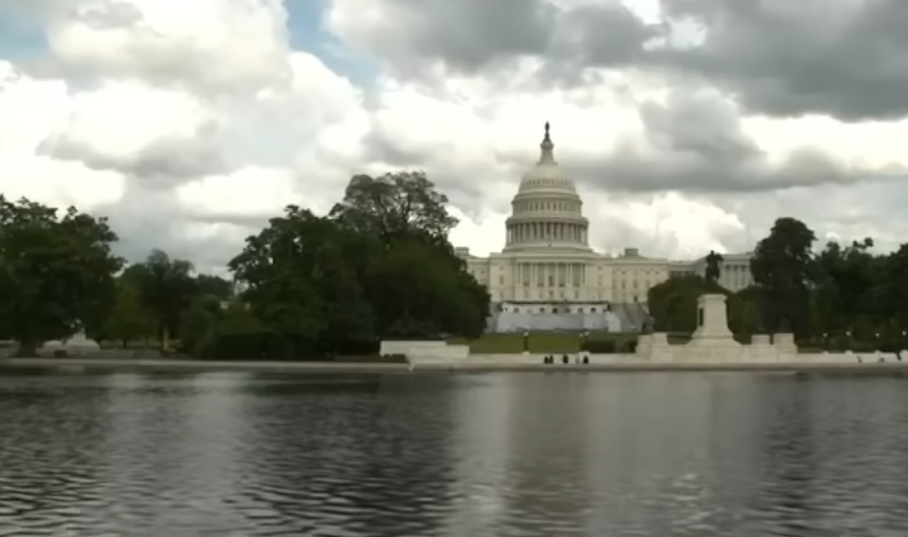The longest government shutdown in American history lasted an incredible 35 days, from December 22, 2018, to January 25, 2019. It started out as a political battle over $5.7 billion for a wall along the U.S.-Mexico border, but it quickly grew into something much more significant—a lasting test of forbearance, leadership, and national fortitude. That shutdown turned into a highly symbolic event in American politics, revealing the brittleness of consensus as well as the unexpected fortitude of common people left in its wake.
During those five weeks, approximately 800,000 federal employees faced either furloughs or unpaid labor. Many families experienced immediate and severe financial consequences, including missed mortgage payments, depleted savings, and uncertainty that significantly affected day-to-day living. The Smithsonian museums stood eerily silent, national parks were overrun with trash, and air traffic controllers put in double shifts without getting paid. However, many Americans showed incredible solidarity in the midst of this paralysis by setting up food drives and short-term relief funds, which lessened the impact of the political impasse.
The length and stubbornness of the 2018–2019 shutdown were especially noteworthy. The majority of previous shutdowns ended in a matter of days, but this one lasted for weeks on end, complete with heated arguments and nightly news updates that ticked off each day like a marathon clock. While Democrats, led by then-Speaker Nancy Pelosi, remained adamant that no funding bill containing no funds for the border wall would pass, President Donald Trump refused to sign it. Deep ideological differences were exposed by the deadlock, but it also demonstrated how political intransigence can affect millions of people outside of Capitol Hill.
Key Information Table
| Category | Details |
|---|---|
| Duration | 35 Days |
| Start Date | December 22, 2018 |
| End Date | January 25, 2019 |
| Administration | Donald J. Trump (First Term) |
| Cause | Dispute over $5.7 billion border wall funding |
| Federal Workers Furloughed | Approximately 380,000 |
| Employees Working Without Pay | Around 420,000 |
| Economic Impact | Estimated $11 billion loss |
| Notable Effects | Airport delays, halted food inspections, park closures |
| Reference | Wikipedia – Government Shutdowns in the U.S. |

The effects were especially bad for the economy. Approximately $3 billion of economic activity was permanently lost, according to a later $11 billion loss estimate from the Congressional Budget Office. The burden was disproportionately felt by federal contractors, many of whom were not guaranteed back pay, and small businesses located close to government hubs experienced a significant decline in revenue. Ironically, the government ended up spending more money than it had saved during the standoff, which was meant to show fiscal restraint.
Pressure started to build by the middle of January as the consequences spread throughout various industries. Significant airport delays resulted from a wave of “sick-outs” that the Transportation Security Administration had to deal with. Inspections for food safety significantly slowed. The FBI cautioned that a lack of funding was impeding investigations. Even the Coast Guard, part of the armed services, struggled to pay its personnel—a situation unprecedented in modern U.S. history. It became more challenging to politically defend the shutdown as a result of these domino effects.
On January 25, 2019, the government reopened, but without the funding for the border wall that had sparked the conflict. The administration’s tactical retreat in acknowledging the growing social and economic costs was reflected in the decision. In addition to providing short-term respite, the agreement was a collective sigh from a tired country. While highlighting the persistent potential for civic cooperation, the incident served as a particularly instructive illustration of how protracted gridlock can undermine public trust in governance.
The 35-day record still stands today, but its relevance continues to grow. As of October 2025, the ongoing shutdown that began earlier this month has already passed two weeks, prompting renewed comparisons. The 2019 shutdown is frequently used as a warning by political analysts as an example of how brinkmanship can degenerate into dysfunction. It is used to gauge the length of time and degree of disruption caused by each subsequent closure.
There have been a number of noteworthy shutdowns in the past, including the 21-day standoff in 1995–1996 under President Bill Clinton, which centered on budget talks with Speaker Newt Gingrich; the 16-day shutdown in 2013 under President Barack Obama, which was motivated by efforts to thwart the Affordable Care Act; and shorter, days-long episodes during the Reagan administration. However, none were as economically significant or as resilient as the 35-day record.
In addition to its duration, the 2019 shutdown was notable for its timing. It took place during one of the busiest travel times, the holidays, and caused national landmarks to close. Curators of museums locked up valuable exhibits, families traveling to Washington discovered barricades at the National Zoo, and weddings scheduled at national monuments were canceled. Millions of people saw the shutdown as a visible, everyday annoyance rather than a far-off political argument, which caused democracy to appear to have stalled, at least temporarily.
Communication lessons were also learned from the shutdown. Headlines were dominated by Trump and Pelosi’s messaging war, but beneath the rhetoric was a common frustration. Personal accounts of federal employees started to circulate online, including handwritten notes taped to closed doors at government buildings, photos of air traffic controllers holding protest signs, and tweets from unpaid Coast Guard members. These pictures came to represent resiliency in the face of dysfunction, showing how people adjust even when institutions fail.

